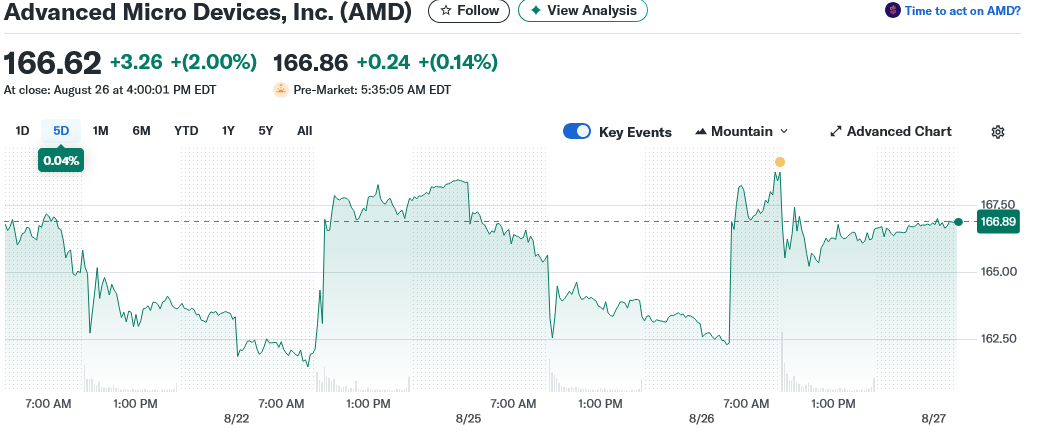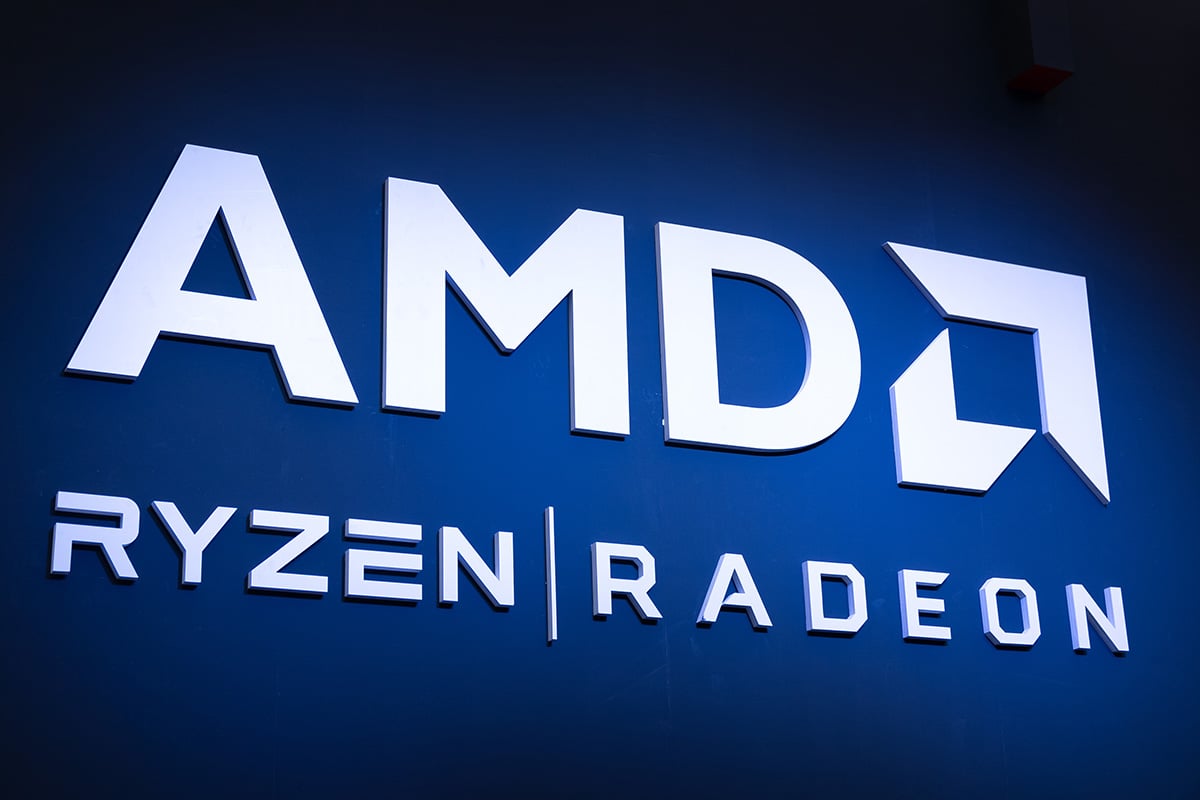TLDR
- AMD partners with IBM to develop quantum-centric supercomputing systems combining quantum processors with AI/HPC accelerators
- Institutional investors like Vanguard and BlackRock continue accumulating AMD shares despite some hedge fund exits
- AMD’s Instinct MI355 accelerators target 10% data-center GPU market share by 2025, currently at 2%
- AMD trades at 43x forward P/E versus Nvidia’s 65x, suggesting undervaluation in AI chip sector
- Companies plan live demonstration of hybrid quantum-classical workflows in late 2025 with commercial platforms by 2026
Advanced Micro Devices is making moves that have billionaire investors paying attention. The chip maker’s recent partnership with IBM and push into AI accelerators is reshaping how Wall Street views the company’s future.
AMD reported Q2 2025 earnings of $0.48 per share on revenue of $7.68 billion. The company’s data center business drove much of this growth. Analysts project 2025 revenue of $32.99 billion, up 28% from 2024.
The stock trades at 43x forward earnings compared to Nvidia’s 65x multiple. This valuation gap has caught the eye of institutional investors. The company’s price-to-sales ratio of 8.5x sits well below Nvidia’s 12.3x.
Vanguard Group now holds 9.35% of AMD shares. BlackRock has also been accumulating positions. These moves come as some hedge funds take profits and reduce exposure.

Strategic Quantum Computing Partnership
AMD and IBM announced a collaboration to develop quantum-centric supercomputing systems. The partnership combines IBM’s quantum processors with AMD’s CPUs, GPUs, and accelerators. Companies plan to demonstrate hybrid workflows in late 2025.
The collaboration targets drug discovery, materials science, and logistics optimization. AMD’s high-performance computing systems will handle data analysis while quantum processors tackle complex simulations. Commercial platforms are expected by 2026.
The quantum computing market is projected to grow at 34.6% annually through 2030. AMD’s existing supercomputing dominance positions it well for this transition. The company’s processors power the world’s two fastest supercomputers, Frontier and El Capitan.
AI Accelerator Competition Heats Up
AMD launched its Instinct MI355 accelerators in late June 2025. These chips target hyperscale customers seeking alternatives to Nvidia’s GPUs. The company currently holds 2% of the data-center GPU market.
Truist Securities analyst William Stein upgraded AMD to “buy” status. He projects the company could capture 10% market share in data-center GPUs. This would represent meaningful growth in a sector where Nvidia controls over 80%.
AMD’s gross margin of 50% trails Nvidia’s 75% but continues improving. The MI355’s premium pricing is expected to boost margins further. Enterprise demand for AI infrastructure continues outpacing supply.
However, AMD faces challenges in software ecosystem development. The company’s ROCm platform lags behind Nvidia’s CUDA in developer adoption. This gap limits AMD’s ability to gain market share quickly.
Billionaire investor moves show mixed sentiment. David Tepper of Appaloosa Management sold 1.63 million AMD shares between April 2024 and March 2025. Philippe Laffont of Coatue Management reduced his stake by 53% in Q2 2025.
Other investors see opportunity in AMD’s diversified portfolio. Unlike pure-play AI stocks, AMD spans CPUs, GPUs, and high-performance computing. This diversification reduces exposure to sector-specific risks.
The company’s competitive pricing appeals to cost-conscious enterprises. As AI adoption becomes mainstream, this demographic could expand. AMD’s partnership with IBM further strengthens its ecosystem positioning.
Financial metrics support the bullish case for patient investors. Free cash flow reached $2.33 billion with $5.87 billion in cash reserves. The balance sheet provides flexibility for continued R&D investment.
AMD’s collaboration with IBM includes plans for hybrid quantum-classical workflows targeting real-world applications by 2026, with both companies positioning themselves as leaders in the emerging quantum computing market projected to grow at 34.6% annually through 2030.


